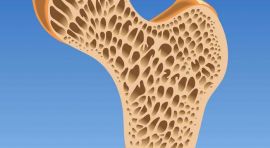מנהלי קהילה


מחקר חדש...נטילת ויטמין D לאחר גיל 70 אינה מועילה לחלוטין
We use cookies to enhance your experience on our website. By clicking 'continue' or by continuing to use our website, you are agreeing to our use of cookies. You can change your cookie settings at any time.
Continue
Find out more
Skip to Main Content
Oxford University Press
Sign In Register
The American Journal of Clinical Nutrition American Society for Nutrition
IssuesMore Content Submit About PurchaseAdvertise
search filtersearch input
Advanced Search
Article Contents
ABSTRACT
Introduction
Methods
Results
Discussion
ACKNOWLEDGEMENTS
Notes
References
Randomized controlled trial of vitamin D supplementation in older people to optimize bone health
Terry J Aspray Thomas Chadwick Roger M Francis Elaine McColl Elaine Stamp Ann Prentice Alexander von Wilamowitz-Moellendorff Inez Schoenmakers
The American Journal of Clinical Nutrition, nqy280, https://doi.org/10.1093/ajcn/nqy280
Published: 08 January 2019 Article history
Split View PDF Cite
Permissions
Share
ABSTRACT
Background
Vitamin D insufficiency is common in older people and may lead to increased bone resorption, bone loss, and increased falls and fractures. However, clinical trials assessing the effect of vitamin D supplementation on bone mineral density (BMD) have yielded conflicting results.
Objectives
This study examined the effect of vitamin D supplementation on BMD at the hip, using dual-energy X-ray absorptiometry.
Methods
A total of 379 adults aged ≥70 y (48% women; mean age: 75 y) from the northeast of England were randomly allocated to 1 of 3 doses of vitamin D3 [12,000 international units (IU), 24,000 IU, or 48,000 IU] given once a month. The primary outcome was change in BMD (ΔBMD) at the hip. Secondary endpoints comprised the dose effects on femoral neck BMD, falls, circulating calciotropic hormones, bone turnover markers, and adverse events.
Results
The mean ± SD baseline plasma 25-hydroxyvitamin D [25(OH)D] concentration was 40.0 ± 20.1 nmol/L, which increased after 12 mo to a mean 25(OH)D of 55.9, 64.6, or 79.0 nmol/L for participants receiving a monthly dose of 12,000, 24,000, or 48,000 IU, respectively (P < 0.01 for difference). There was no between-group difference in ΔBMD. However, parathyroid hormone concentrations decreased in all 3 groups, with a significantly greater decrease in the 48,000-IU group compared with the 12,000-IU group (P < 0.01). There were no differences in any adverse events between groups, with 3 cases of hypercalcemia, none of nephrolithiasis, and 249 falls observed.
Conclusions
There was no difference in change in BMD over 12 mo between the 3 doses of vitamin D, suggesting no effect of the intervention or a similar attenuation of the anticipated decrease in BMD over 12 mo. The treatment was safe and effective in increasing plasma 25(OH)D concentrations, with no dose-related adverse events. This trial was registered at the EU Clinical Trials Register (EudraCT 2011-004890-10) and the ISRCTN Registry (ISRCTN35648481).
vitamin D, older people, randomized controlled trial, bone mineral density, dual-energy X-ray absorptiometry
Issue Section: Original Research Communications
Introduction
Vitamin D insufficiency is common in older people and may lead to increased bone resorption, bone loss, impairment of muscle function, and an increased risk of falls and fractures. The results of clinical trials assessing the effect of vitamin D supplementation on bone mineral density (BMD), bone loss, falls, and fractures have yielded conflicting results, and, although a recent meta-analysis of clinical trials reported a possible relation between vitamin D supplementation and higher BMD at the neck of femur, it suggested that supplementation with vitamin D has a benefit for bone health only in those at risk of vitamin D deficiency (1).
Internationally, guidelines differ in their recommendations for vitamin D status for musculoskeletal health, as reflected by circulating 25-hydroxyvitamin D [25(OH)D] concentrations: in the United Kingdom, the Scientific Advisory Committee on Nutrition (SACN) recommends a concentration of ≥25 nmol/L (2). In North America, the Institute of Medicine (IOM) recommends a concentration of 50 nmol/L (3), whereas the Endocrine Society clinical guideline recommends a target concentration of 75 nmol/L for the maintenance of bone health and other nonskeletal benefit (4). The UK dietary Reference Nutrient Intake is 10 μg [400 international units (IU)]/d (2), whereas in North America, the Recommended Dietary Allowance (RDA) for those aged >70 y is 20 μg (800 IU)/d (3). However, in this age group in the United Kingdom, the mean daily vitamin D intake from dietary sources (including nutritional supplements) is ∼5.2 μg (208 IU)/d (2), and medical prescription of vitamin D supplements is relatively uncommon, even among those at highest risk (5, 6).
Decreased dose frequency has been identified as a factor associated with better adherence to pharmacological therapy (7), and because plasma 25(OH)D has a half-life estimated in terms of weeks rather than hours (8–10), daily dosing may not be required to maintain an adequate vitamin D status. However, decreasing dose frequency may have unanticipated effects. For example, one clinical trial evaluating an annual oral dose of 12,500 µg (500,000 IU) vitamin D found that there was an increase in falls and fractures (11).
Overall, previous study findings are conflicting, which may reflect variations in study design, the characteristics of participants (such as age, frailty, and baseline vitamin D status), and the nature of intervention, including vitamin D dose, its route, the frequency of administration, and the form of vitamin D (whether vitamin D2 or vitamin D3). The aim of this study was to measure the effect of vitamin D supplementation on the change in BMD at the hip in community-dwelling older people. We also investigated the effects of supplementation dose on a number of predefined secondary endpoints including change in plasma 25(OH)D [total and calculated free 25(OH)D], parathyroid hormone (PTH), and biochemical markers of bone turnover, as well as the frequency of falls and adverse events.
Methods
The Vitamin D Supplementation in Older People (VDOP) Trial (ISRCTN35648481) was a single-center, parallel-group, participant-randomized, double-blind interventional trial testing the effects on hip BMD of 3 doses—300, 600, and 1200 µg (12,000, 24,000, and 48,000 IU)—of oral vitamin D3 given each month to men and women aged ≥70 y for 1 y as described earlier (12), with the first dose given between November 2012 and May 2013. The study was funded by Arthritis Research UK (D19544). Potential participants were identified from electronic medical records from 25 general practitioner practices in the northeast of England. Participants were invited to take part after ensuring they did not meet the following exclusion criteria:
treatment with antiresorptive or anabolic treatment for osteoporosis in the previous 3 y;
current consumption of supplementary vitamin D at a dose >10 μg (400 IU)/d or calcium at a dose >500 mg/d;
experience of a fragility fracture in the previous 6 mo;
a history of renal stones, previous bilateral hip replacements, or primary hyperparathyroidism;
past or present history of hypercalcemia (albumin adjusted plasma calcium >2.60 mmol/L), hypocalcemia (albumin adjusted plasma calcium






ד"ר נירית אבירן ברק
המחקר קצר (שנה) ולא נבדקו שיעור השברים אלא רק שינוי בצפיפות העצם שלמעשה אין לו שממעות בטווח של שנה
samu
תוצאות המחקר מתפרסמות באחד העיתונים המעולים שקיימים בתחום ועבר בדיקה דקדקנית על ידי מומחים מהשורה הראשונה בתחום האוסטיאופורוזיס. המכשור כיום לבדיקת צפיפות עצם שהקלינאים כול כך אוהבים אותה הוא עם דיוק ששנה מספיקה לראות שינוי משמעותי. זה לא המכשור של פעם.
samu
ולגבי שיעור השברים הרי שבגילאים מעל 70 ניסוי קליני לבחון זאת תותיר את הניסוי ללא נסיינים עקב שיעור תמותה גבוה. שנה אחת זה לא זמן לבחון שיעור שברים!!!
samu
ראו איזה הרכב מדהים יש לתוסף זה
samu
Bonemaximizer iii תוסף הסידן המכיל את כול מה שהעצם זקוקה כדי שתהיה חזקה ולא שבירה